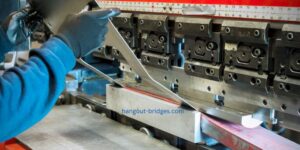Key Takeaways:
- The fusion of cutting-edge technology and attentive training can significantly improve restaurant efficiency.
- Innovative menu engineering and inventory management are crucial to increasing profitability.
- Expanding into new revenue streams and maintaining industry best practices can provide stability and growth opportunities.
Understanding the symbiotic relationship between efficiency and profitability is vital for those managing or owning a restaurant. Every detail counts in the ever-evolving restaurant industry, where customer satisfaction and seamless service are paramount. We look at how technology and innovative approaches carve the path to a streamlined business operation, focusing on programs and strategies that engender loyalty and repeat business, such as innovative restaurant loyalty programs.
Integrating Technology for Seamless Operations
Modern restaurants are turning to technological innovations to streamline their operations, from order management to customer engagement. Sophisticated technologies such as digital POS systems, online reservation tools, and even AI-powered analytics platforms help create an ecosystem that promotes efficiency. These advancements provide real-time data for making informed decisions impacting a restaurant’s bottom line.
Cultivating a Trained and Efficient Workforce
Staff education is the backbone of efficiency. A well-trained team can easily navigate the busiest hours, deliver exceptional service, and contribute to a restaurant’s positive reputation. Training programs focused on customer service, upselling techniques, and operational agility can foster an environment that keeps employees and customers happy, turning first-time patrons into devoted regulars while empowering staff to perform at their best.
Revamping Menus for Maximum Impact
Creative menu design can enhance a restaurant’s operational efficiency while satisfying customers’ culinary cravings. By focusing on popular and profitable dishes, restaurants can streamline their kitchen operations and inventory requirements. This approach simplifies decision-making for staff and diners and enables the kitchen to deliver consistently high-quality dishes with reduced preparation times.
Managing Inventory Intelligently
Intelligent inventory management is essential for reducing wastage and managing food costs – two critical factors in a restaurant’s profitability. By implementing systems that offer real-time data on stock levels, restaurants can respond more agilely to fluctuating demand, avoid over-purchasing, and minimize waste. Streamlining the Inventory process directly impacts cost savings and fulfills the modern consumer’s expectations of sustainability and ethical sourcing.
Fostering Restaurants: Always Improving
In the world of restaurateurs, customers fostering a progressive culture that values input and innovation from every team member is often seen as promoting customers. Encouraging staff to provide feedback and contribute ideas can lead to the discovery of new efficiencies and enhancements, improving service times and customer satisfaction. Cultivating this culture is an ongoing commitment that can lead to a strong, cohesive team and an adaptable and resilient business.
Implementing Effective Marketing Strategies
The role of strategic marketing in a restaurant’s success cannot be understated. A well-conceived marketing plan can draw in new customers, reinforce relationships with existing ones, and elevate the customers’. Engaging in localized marketing efforts can also capitalize on community engagement, fostering a loyal customer base that’s integral for consistent revenue flow.
Building the Brand through Savvy Marketing
A casual diner may become a brand ambassador using creative marketing techniques, such as customized email marketing and targeted social media campaigns. Effective marketing creates a buzz around the restaurant and invites interactions that can provide valuable insights into customer preferences. These insights, in turn, can shape future menus, promotions, and even operational reforms.
Exploring Additional Revenue Streams
Restaurants are defined by the conventional model of serving in-house diners. Today, additional revenue streams such as catering services, cooking classes, and branded merchandise are among the innovative ways restaurants reach beyond their walls to create new profit channels. By diversifying the company’s offerings, these initiatives increase the number of ways that consumers may interact with the brand.
Diversification as a Growth Strategy
Embracing different revenue streams, such as offering meal kits or engaging in food festivals, presents opportunities to capture various market segments. By identifying and tapping into these opportunities, restaurants can smooth out the inevitable ebbs and flows of business, ensuring a steady and more predictable income stream.
Keeping Pace with Industry Best Practices
In today’s fast-paced restaurant industry, keeping up with the latest industry trends, best practices, and customer preferences is essential. It is crucial to stay on top of sustainability measures, customer service techniques, and innovative culinary trends to provide unparalleled experiences to customers and keep them coming back for more. As a result, it is essential to commit to continuous learning and development to remain competitive in the dynamic restaurant landscape. By staying up-to-date with the latest industry developments, restaurant owners and managers can craft unique and memorable experiences that resonate with their customers and keep them engaged. This approach can help businesses build a loyal customer base and create a strong reputation in the industry.
Investing in Professional Development
A commitment to professional growth ensures that restaurateurs and their teams consistently refine their skills and stay ahead of industry curves. Attending workshops, subscribing to trade publications, or becoming a member of professional organizations all contribute to a restaurant’s ability to adapt and thrive in an ever-changing landscape. Given the complexity and competitiveness of the restaurant business, every added efficiency can significantly impact customer satisfaction and the bottom line. Embracing the above strategies can guide restaurateurs’ efforts toward creating a more streamlined, efficient, and lucrative operation, ready to serve the next wave of hungry customers with finesse and flair.









